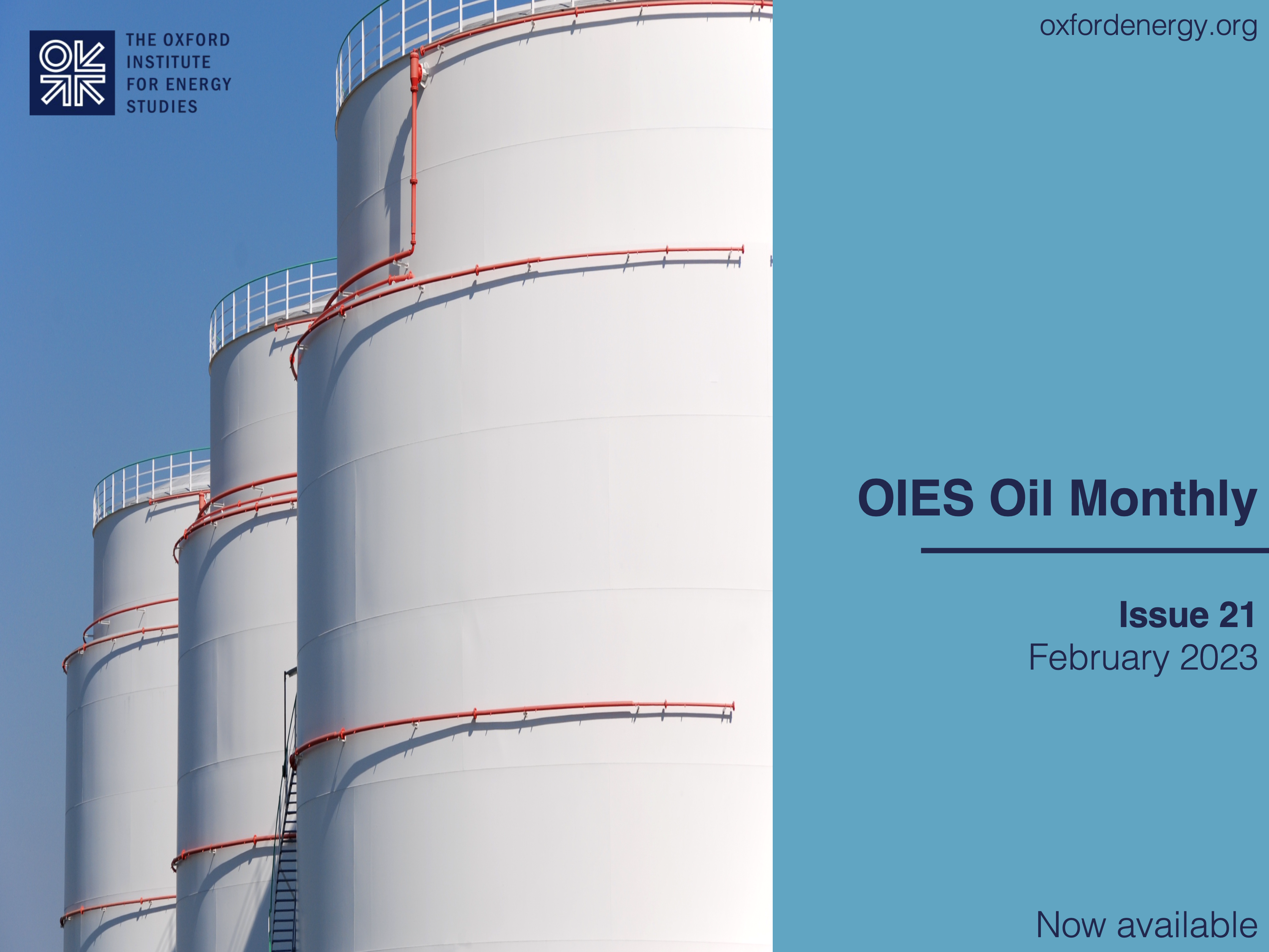OIES Oil Monthly – Issue 21
The new issue of OIES Oil Monthly, including our latest short-term oil market outlook to 2023, is now available.
– The year started on a positive note, with inflationary pressures easing on the back of lower energy prices, the pessimism over global economy appearing to have had reached a peak and China’s faster than anticipated reopening boosting sentiment. Entering February, however, and just like most of 2022 the signals started to get mixed, as uncertainty over the impact of EU ban on Russian product imports comes into spotlight, the question of where we are in the interest hiking cycle remains open and sentiment over China’s recovery appears very volatile. Taken together, the first 35 days into 2023 reaffirmed that this will be the year of the aftershocks where elevated uncertainties across the board will continue to shape market expectations and balances, leading to another year of heightened price volatility.
– Russia’s supply resilience despite the enforcement of the EU crude sanctions on Dec 5, 2022, has led us to downgrade our Reference case of expected disruptions in Russian oil production for 2023 at 850,000 b/d below pre-war Jan/Feb-22 levels, from 1.1 mb/d anticipated previously. Russia’s crude production is expected to decline by 530,000 b/d to 10.2 mb/d in 2023, from 10.7 mb/d in 2022. Russian seaborne crude exports continue to weather the EU ban and G7 price cap, but unlike crude, Russia is facing more challenges marketing its products after the EU ban pertaining to the demand for its products, the viability of long-haul trade for its products, and the availability of clean tankers fleet to move its products. The extent of disruption on Russian products is expected to be seen in the first half of the year.
– Global oil demand growth outlook is upgraded by 150,000 b/d to 1.6 mb/d in 2023, from 1.5 mb/d anticipated previously. Revisions in Chinese demand drive the upgrades in 2023, but the outlook continues to reflect cautious rather than excessive optimism about the Chinese recovery in H2. Downside risks to the outlook persist but eased, with global oil demand in 2023 expected to move past the COVID shock in the second half of the year.
– Global oil supply growth is upgraded to 1.6 mb/d in 2023, an upward revision by 500,000 b/d, from 1.1 mb/d forecast previously. After rising by 4.7 mb/d in 2022, global oil supply growth is expected to slow this year closer to the 2010-2019 average of 1.5 mb/d and range between 1.2 mb/d and 2 mb/d, with the realization of Russian oil production remaining a wildcard.
– After a brief rally triggered by weather-related disruptions shutting 2.6 mb/d of US refining capacity and firmer Asian demand on China’s reopening, products cracks eased again recently as EU buyers intensified their buying spree ahead of the EU ban of Russian products lifting stocks, sluggish economic activity continues to weigh on demand, and China offering more products for exports. Middle distillates however remain elevated at historically high levels as the market will find it more challenging to adjust to the EU ban on Russian product imports, refining constraints and outages loom in the near-term horizon and China’s large availability of product exports is not guaranteed in 2023.
– Our Reference forecast for Brent is upgraded by $3/b to $95.7/b from $92.7/b previously. The price outlook strengthens beyond Q1 2023, supported by the latest profile of Russian supply disruptions that is carried forward into the year and expected to peak in Q2, confronting tighter market conditions amid improved Chinese demand. The balance of risks this month remains tilted to the downside, with Q2 appearing to be the most at risk to materialise as the weakest quarter to the balance in 2023, but $100/b could return from May-onwards if balances tighten faster.
– We forecast that the oil market will remain relatively balanced in 2023, building a small 300,000 b/d surplus. 2023 is shaping up to be a year of two halves with an expected 1.5 mb/d surplus in H1 being offset by a -900,000 b/d deficit in H2 to bring the market near balance, but market uncertainty in the year remains elevated.
